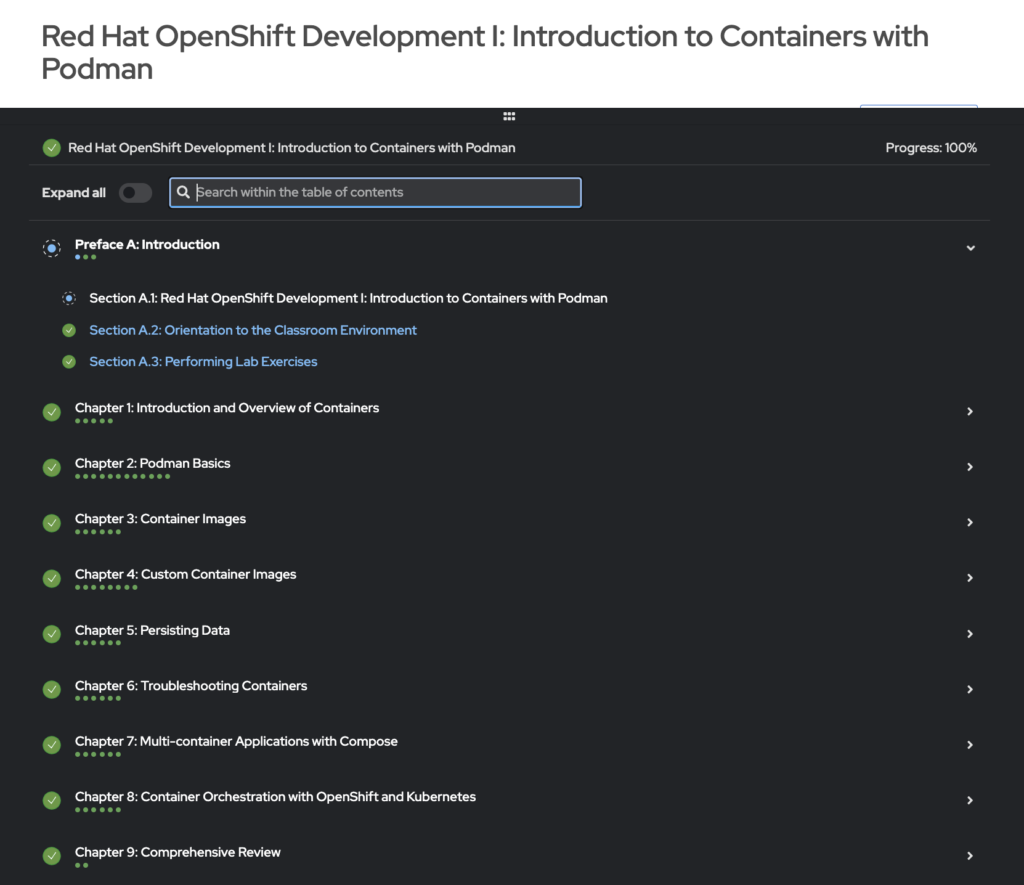Background
As you probably already know, Level Up loves containers and all things cloud native.
Preparing for a certification exam like Red Hat’s EX188 (primarily focused on a high-level overview of Red Hat OpenShift/Kubernetes, as well as Podman, Skopeo, and Buildah practical skills) is about more than memorization, it’s about mastering a repeatable system of problem-solving.
If you’re looking for a breakdown of the structured approach that members of the Level Up team have followed to confidently and successfully tackle the current version of EX188, blending formal training, real-world troubleshooting, and strategic practice, then you’re in luck! Because what follows here is a Level Up solutions architect’s recent, personal EX188 learning journey, from start to becoming a Red Hat Certified Specialist in Containers.
Weeks 1-2: Foundation Building
I began with Red Hat’s DO188 course (Containers for Developers) via the Red Hat Training Portal. This is the very same content that customers can access with a Red Hat Learning Subscription (RHLS). My initial pass through the material was exploratory: identifying which labs and concepts would demand more intensive focus.

Next I transitioned into a step by step, comprehensive walkthrough, executing all of the guided exercises and labs. To reinforce my learning, I spun up my own Podman containers locally, creating multi-tiered environments (e.g., web server + application server + database server) to simulate real-world scenarios and troubleshoot interactions between services.
Because I like to make sure I’m seeing the full picture and getting different perspectives, augmenting the official vendor material is always part of my process. So for EX188, I consumed some targeted external content, notably from Eddie Jennings on YouTube. Jennings’ approach, which involves breaking systems intentionally, then fixing them, reminded me a lot of the “Level Up way of learning” that we emphasize internally: push the boundaries of the platform, deepen understanding through controlled failure, and recover.
Big takeaway here: Treat containers like a living lab. If you aren’t trying to break things, you’re probably learning too passively.
Weeks 3-4: Focused Repetition and Mastery
Entering the second phase, I intensified my focus. This time, I zeroed-in on the unguided lab exercises from DO188, the ones that hide the answers behind a “Show Solution” button.

My rule was simple:
- Attempt the lab entirely from memory.
- Only peek at the solution if absolutely necessary.
- Immediately close knowledge gaps through direct hands-on repetition.
During this phase, I zeroed-in on my persistent weak spots:
- Troubleshooting multi-architecture containers
- Podman Compose
- Rootless vs. rootful container behavior, particularly default data storage paths and how tools like
podman execandpodman unsharecan be used to troubleshoot rootless containers. Red Hat expects you to understand this, because rootless is considered significantly more secure than Docker’s traditional root-based requirements.
Quick reference:
- Rootless storage path:
~/.local/share/containers/storage - Rootful storage path:
/var/lib/containers
Big takeaway: Practice active recall and deliberate struggle. This is how you turn rote knowledge into a simple reflex.
Final Week: Exam Simulation
The last seven days were pure immersion for me.
I walked through every lab scenario again, deliberately rerunning the commands on my own Podman setup. I treated every lab like an exam simulation, emphasizing:
- Using
manpages extensively to locate and understand commands, especially Containerfile examples and systemd service integrations. - Building muscle memory for where to find specific, exam-relevant examples within documentation.
- This is because both the
manpages and Red Hat’s offline documentation are available to you during the exam, but you really have to know where to look given the time and problem constraints.
In short, it was all about pattern recognition and fast retrieval under simulated test conditions.
Taking the Exam: Mindset Matters
One final piece of advice:
If you don’t pass the EX188 on your first attempt, that’s totally okay. (Most current RHLS subscription levels include not just exam credits, but also some retakes.)
Use that first attempt to:
- Understand how the exam structures its tasks.
- Observe how discovery, resolution, and validation are each tested.
- Build a mental map of the exam’s “puzzle pieces” for next time.
Every exam is a feedback loop. If you ask me, winning is about continually refining your approach, not just getting lucky on exam day.
My Final Thoughts:
These days, understanding how containers work under the hood, and also how they fit into the bigger Red Hat OpenShift picture, isn’t optional for Level Up SA’s, it’s a competitive differentiator. For me personally, training for EX188 wasn’t just about passing a test; it was about upgrading my problem-solving framework for the container-first future of many of Level Up’s customers.
